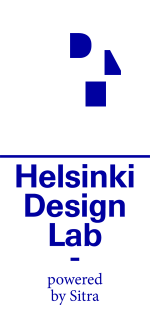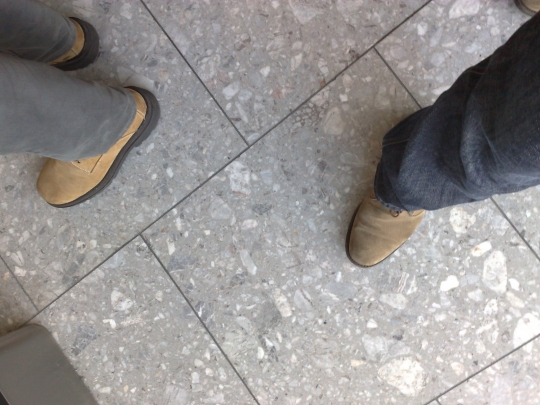Field Reports
Today I spent time with the research team at the Helen Hamlyn Centre in London. Stunning work looking at applying design to bring innovation in healthcare (one of many areas of focus): Maya gave us an overview of their low cost disposable surgical tools; Johnny talked about their resus-station; Sally showed the graphic design of injectable medicines; Rob walked me through their Smartpods. All stellar work, well worth a study!
While the tangible outputs of their work were great design solutions, the real jewel is the process. Much of our discussion focused on an innovation cycle that does not stop at concepts, but pushes it beyond to implementation. When we talk about healthcare getting all the right stakeholders, identifying key champions, finding the right funding (money, after all, does not come without strings attached!), framing the problem productively, keeping focus, having the right stewardship…. well, it’s not easy. And it does not happen overnight. But this is a design process that enables the design solution to shine.
The great challenge today is not so much great ideas, but implementing great ideas. In an age where risk is a risky proposition, being able to demonstrate that a new way of framing problems (through design) leads to better solutions is critical. But without an innovation process that spans the continuum of inception to implementation it’s hard to make the ROI argument…. because there is no return!
Design is perhaps best described as “pattern recognition”. Today I met with Zary and his colleagues at Wireless@KTH in Stockholm. At lunch we talked about the barriers to innovation in the wireless sector and suddenly I caught onto a pattern. Many design communities define the “consumer” differently as they have diverse cycles of innovation… it’s not rocket science, but sometimes it’s the small revelations that help make our world a little more coherent.

The “consumer” question gets a different answer depending on who you ask. In the product world you do consumer research, figure out what people want, and then design for that need. In architecture, who knows who the consumer will be 50 years from now? And if it’s a public building, by nature it defies any single profile but rather must be inclusive of anyone and anything. These two design communities, while related, have fundamental difference. Same goes with device and infrastructure communities in the wireless sector. The device world is consumer focused, churning products on a quarterly rate; the infrastructure world on a 50 year trajectory providing needs that have yet to be defined. But what happens when consumer services require both aspects to be coordinated & integrated?
What happens when the appliance providers need to work with the architecture providers to create a sustainable living solution?
Off to London now, were I look forward to meeting up with Rama and his colleagues. Nothing like good people over a good meal!
In a few days we’re starting the Almost Grand Tour of 10 cities in 10 days to reconnect with some familiar faces from Helsinki Design Lab 2008 and make some new friends too. This is one of many ways for us to start developing HDL 2010. We’re thinking of Helsinki Design Lab 2010 as a crucible for strategic design on the global scale, so what better way to start than to visit designers around the planet and see what they’re up to?
My travels will take me to Stockholm, London, Boston, San Francisco, Tokyo, Singapore, Hong Kong, Bangalore, and back to Helsinki. Along with my colleagues Bryan, Minna, and Pia (who are each joining me on various stops) we’ll be updating this blog daily with some reflections on the trip and the people we meet.
Helsinki Design Lab 2010 is still a ways off, but we’re getting started early and thought that some of you may want to get a peek into organizing a global event like this. Where better to start than introducing ourselves?
I joined Sitra, The Finnish Innovation Fund, as Director of Strategic Design last August. For the past 10 years I’ve also been an Associate Professor at the Harvard Design School, where I am currently on leave. While at Harvard my work focused on healthcare system design and sustainability issues for small and medium-sized enterprises .
Here at Sitra I head the Strategic Design & Networks team. While I was adamant about adopting the term “strategic design” I also recognize the potential downside to this word combo… design means everything and nothing. And strategy… well that seems to color everything worthy of attention these days! Putting linguistics aside, I think strategic design is important because it describes what we do (I hope!) and it reframes the word “design” in a more competitive context, which is critical if design is to be understood as a valuable asset. If you’re reading this blog, chances are you already value design as a way of thinking. At Sitra I’m working to make sure that designers have not only the interest in involving themselves with strategic decision making, but also the opportunity.
But why the term “Strategic Design,” you may ask? Design requires the integration of multiple deep knowledge sets; visualization of complex multidimensional problems; and the ability to synthesize conflicting views, data points, and opinions in hopes of developing a holistic understanding so that we can create better and more complete answers to our problems. Traditionally design has been used to help shape better objects (a phone, cup, car). At Sitra my team is using design to help shape better decisions.
I think the bottleneck with today’s large scale challenges (such as health care, the environment, education, justice) is that we don’t even know how to think about them. We all know that heath care is a problem… but what exactly is the issue and how do we make operable something so large and messy? Strategic design helps us ask the right questions and shape decision-making towards more complete and holistic solutions. Better vision leads to better solutions… this is our hope.




